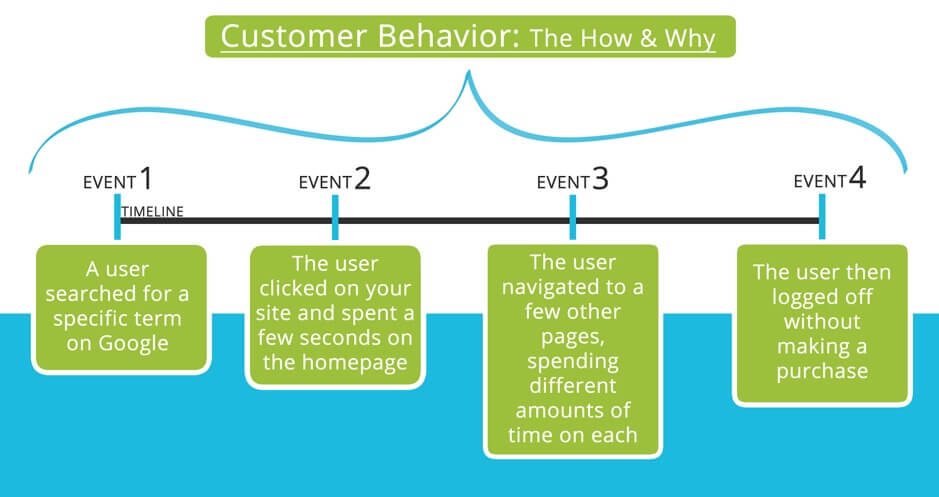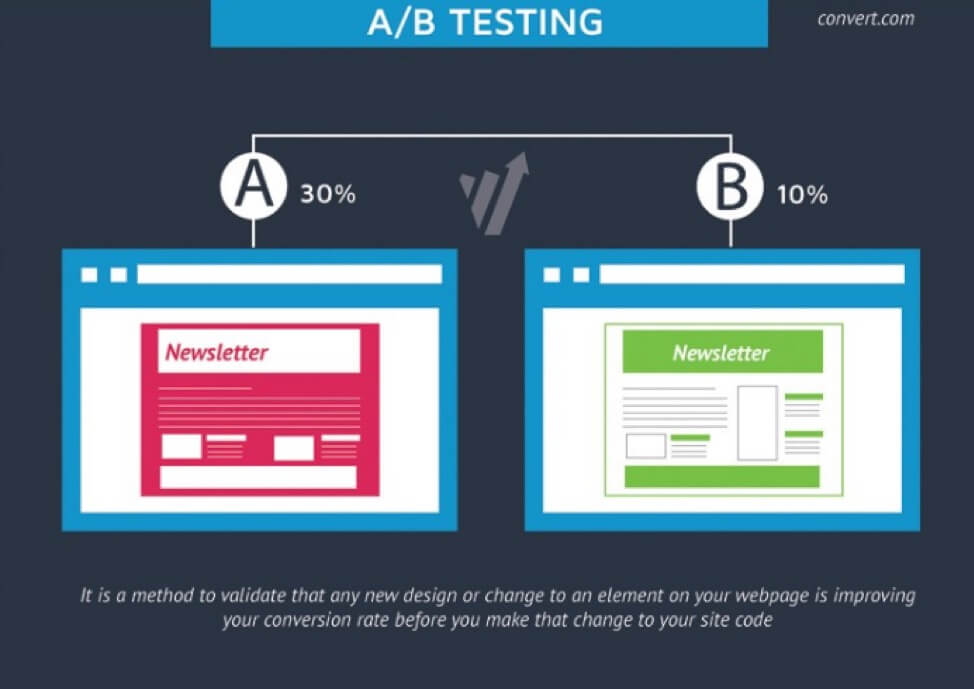Getting Inside Their Heads: The Role of Customer Behavior Modeling in Conversion Rate Optimization

The purpose of conversion rate optimization (CRO) is to convince web users to behave in a certain way upon visiting a website, opening an email, or reading a blog post. The desired behavior is one that would transform the user into a paying customer, a brand advocate, or a lead qualified to become one of these in the future.
CRO encompasses a range of techniques designed to achieve this goal. These include:
- Creating optimized CTAs
- Running A/B tests on various web page elements
- Writing convincing content
- Using high-quality media materials
- And many others
At first glance, these techniques don’t have much in common with each other. They all describe ways of influencing someone to convert, but the way they go about accomplishing this goal is completely different.
This leads to a situation where every business attempting to do CRO uses an eclectic mix of techniques in hopes that one of them will work. Such an approach can produce results, but the reason behind its success will often remain a mystery, making it difficult to duplicate.
But there is a way to tackle this issue. Namely, if you had a sufficient understanding of how customers think and act, you could predict their future behavior with a great deal of precision. Armed with this knowledge, you could then design a website, create a social media post, or run an email marketing campaign designed specifically to trigger converting behavior.
Customer behavior modeling (CBM) represents a methodology for accomplishing this very goal. Through a combination of CRO and CBM, businesses can boost their conversion efforts in a systematic fashion.
To learn more about how CBM impacts CRO, and how you can leverage it for your own business needs, check out our primer on the topic in the paragraphs below.

Customer behavior modeling exists at the intersection of psychology, technology, and business. It is the practice of building predictive models for customer behavior based on data.
Customer behavior modeling uses a variety of techniques to predict customer behavior. These techniques differ based on which psychological principles and theories they use as a foundation, the mathematical and statistical methods they employ to derive insights from data, and the quality and quantity of data used.
Some models look at data such as transaction frequency, average money spent per purchase, etc. through the lens of Bayesian probability, in order to predict when the next purchase is likely to happen. Other models use game theory to speculate on the motives that drive customers to purchase. And some models even utilize big data in conjunction with machine learning to forecast broader customer behavior trends.
The RFM model, which stands for recency, frequency, monetary value, is one of the most widely used customer behavior models in use today. RFM divides customers into a variety of different segments based on their behavior. Examples include:
- Champions – customers who bought something recently, who buy often, and who spend a lot.
- Promising – customers that bought something recently, but didn’t spend much.
- Hibernating – customers that used to buy things infrequently and of little value, and which have been inactive a long time.
- At Risk – customers that used to spend a lot, but which haven’t purchased anything in a long while.
In a broader sense, customer behavior modeling encompasses all attempts to understand customer behavior. Many businesses use elements of behavior modeling in their workflows, without referring to them as such. The problem with this kind of approach to customer behavior modeling is that it provides an incomplete picture, which leads businesses down the wrong path when attempting to do CRO.
Tools for Enabling Customer Behavior Modeling
Customer behavior modeling is a process with many moving parts. To make the task easier, businesses use a variety of tools to solve specific modeling tasks. Some of the most widely used tools include:
- Really Simple Systems, a CRM suite that helps you analyze and integrate various kinds of customer data, including their purchase history, communication logs, and others.
- Hotjar, a tool that uses heatmaps to represent how a user behaves on a website.
- Google Analytics, a staple of digital marketing, this tool gives you a wide array of data to use as a resource for building behavior models.
- Convert, a conversion optimization tool that’s GDPR compliant with features like A/B testing, website split testing, smart personalization, and more.
To turn raw data into insights, Convert Experiences integrates with most of these tools (and 80+ more). If you can’t find a tool you’re using for CRO in the link above, let us know and we’ll build the integration for you!
Why CBM Matters for CRO
Predicting customer behavior is important only insofar it provides some kind of tangible advantage to businesses. There is little use in knowing how customers will behave if you can’t act on the insight.
There are 4 main advantages to using customer behavior modeling for CRO:
- Streamlining the conversion process – Knowing how a customer is likely to act upon visiting a website or opening an email allows businesses to eliminate any unnecessary steps in the conversion process. For instance, if the model predicts that a customer is ready to buy, there is little use in sending them extra emails, or telling them about the advantages of your product one more time.
- Capitalize on new opportunities – Customer behavior models can help businesses discover behavior patterns around which new conversion pipelines can formed. What matters here is that the customer is consistently exhibiting some form of behavior, making it suitable for exploration. For example, if customers tend to download and share images from your blog articles, you can start embedding referral links or discount coupons in all your images.
- Make conversions cheaper –Having a behavior model at hand means that you don’t have to spend time and resources trying to adapt your website, blog, or email all the time. Once you develop a model that works, you can use it as a guideline in the future instead of trying to reinvent the wheel each time. For example, if you figure out that 50% of your customers consistently prefer having an alternative Dark Mode for your website, you can simply implement the feature, and not spend money experimenting with different designs.
- Avoid mistakes and pitfalls – Businesses are sometimes out of touch with what their customers actually want. This leads them to make suboptimal decisions when designing websites and creating content, both of which are essential parts of CRO. Customer behavior modeling can help avoid these mistakes by describing how customers actually behave.
In addition to these, customer behavior modeling also offers a host of less tangible benefits. Knowing more about your customers is always a good value proposition. You can sell prediction data to third parties, discover nascent market trends, educate your sales and customer service staff, etc.
Examples of CBM Usage in CRO
Customer behavior modeling has a number of established uses in CRO. In fact, it is quite likely that you’ve been using customer behavior modeling without being explicitly aware of the fact.
The three most prominent use-cases of CBM in CRO include A/B testing, UX design, and social proof. We will cover them in turn.
1. Hypothesis-driven A/B Testing
A/B testing is one of the foundations of CRO. It enables businesses to determine which among a number of alternatives works best for conversion-related goals. For example, the color of a CTA button with the most conversion potential is something you can determine through A/B testing.
What customer behavior modeling brings to the table is a focus on hypothesis-driven testing. A hypothesis is simply an assumption used for guiding an experiment, and customer behavior modeling can ensure that your assumptions are reasonable at least.
2. User Experience Design
User experience (UX) design is another area where knowing how the customer is likely to act is highly valuable. In the context of CRO, UX design is concerned with creating experiences that motivate the customer to convert.
Thanks to customer behavior modeling, UX designers have an easier time understanding what makes the customer tick. This makes it much easier to design experiences that appeal to your existing, as well as future customers.
3. Social Proof
Social proof is a psychological principle that states the following: people are more likely to act in a certain way if they see others doing it. Showcasing customer reviews on your website is a prime example of social proof in action.
Customer behavior modeling helps you understand why social proof works as it does. It can show how exactly customers behave upon reading a testimonial, and it can explain why they act in a certain way, and not in another.
Concluding Remarks
When it comes to conversion rate optimization, the key thing is understanding customer behavior. And if you can predict how a customer will behave in the future, you can take all the necessary steps to convert them when the time comes. Here lies the value of customer behavior modeling.
CBM enables CRO specialists to make informed decisions on how to develop websites, blog content, and emails. This makes it indispensable for any businesses that want their CRO efforts to the next level.
Speaking of taking your CRO efforts to the next level… have you signed up for a 15-day free trial for Convert Experiences yet?
Sign up for a free trial today.



